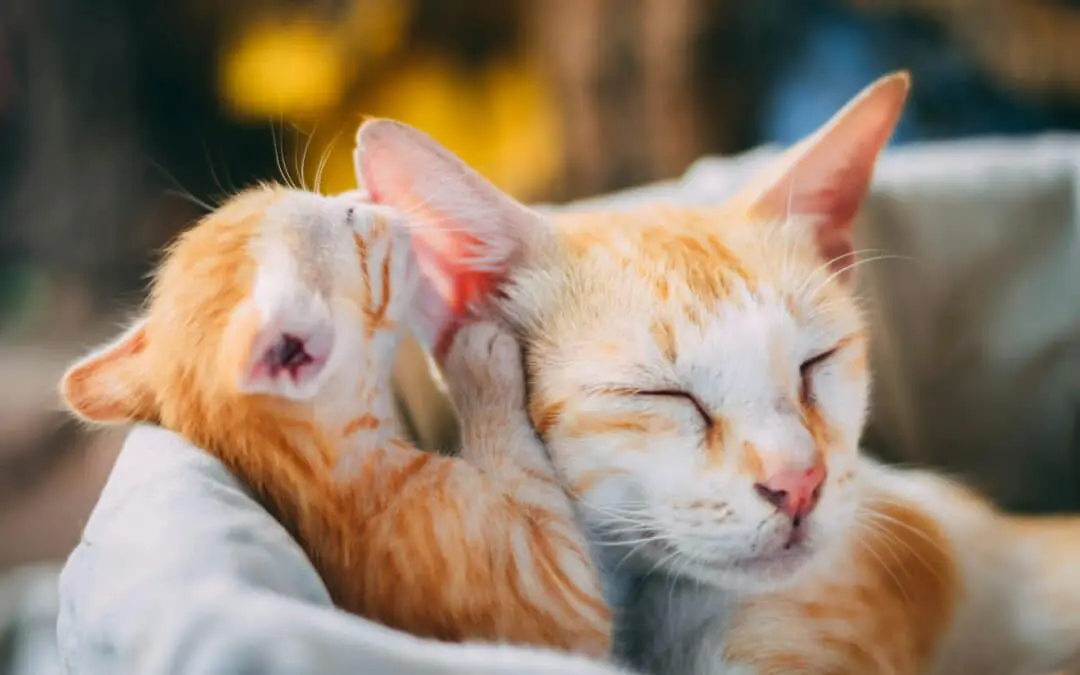Did you know that cats usually only meow for us? They realized we’re not very good at reading their signals, so they learned to get our attention with vocalizations. Let’s take a closer look at how cats communicate and how to understand what your cat is trying to tell you.
How Do Cats Communicate?
A cat’s meow isn’t their only form of communication—in fact it’s not even their favorite method. The most common way that cats communicate is through body language. They use their tails, ears, and faces to communicate far more often than their vocal cords. Learning your cat’s body language is all about observation. Keep an eye on how your cat moves their ears and tail if you want to learn what they are trying to say.
Tail Positions
Whether it’s wrapped around their body, sticking up straight, or swishing back and forth, a cat’s tail can communicate quite a lot.
- Straight up = confident, happy, and social
- Tucked under = scared or worried
- Slow swish = ready to pounce
- Flicking back and forth = concentration or anger
Ear Positions
Cats have impeccable hearing, so they are most likely ignoring you if they don’t respond when you call their name. But they also use their ears to communicate.
- Both ears tucked back and flat = fearful or angry
- Ears relaxed = happy and content
- Ears twisted but not flat = vengeful
- One ear attentive the other stuck back = bored
Facial Expressions
Have you ever seen your cat look bored or mischievous? A cat’s facial expressions—especially the ones they make with their mouths and eyes—will tell you a lot about their feelings.
- Lips up revealing their teeth = anger or fear
- Long slow blinks, with narrow pupils = I love you
- Wide-blown pupils = fear, pain, or worry
Meows Are for Kittens and Humans
You’ve probably tried to talk to your cat in the language of their people (meows) more than once. Unfortunately, we have to let you know that you’re probably speaking gibberish. Meowing was invented for kittens and for us—that’s right, meowing is the equivalent of baby talk.
Cats are masters at getting what they want, and they know that the cuter they are, the more likely their humans will be to dish out the treats. So while more research needs to be done on cat communication, it is safe to say meowing is a language made up just for us.
Communicative Cat Care
Understanding how your cat communicates goes a long way in detecting health problems. Cats often hide their pain—it’s a defense mechanism that keeps them from appearing weak or helpless to predators. But for domestic cats, it means their pain may go by unnoticed until it cannot be hidden any longer.
If you notice your cat is acting differently or avoiding your touch, they may be trying to communicate a problem. At East Valley Animal Hospital, we know that communication between you, your cat, and your veterinarian is key. From checkups to urgent care, we’re here for you. Contact us today to schedule an appointment.
Images used under creative commons license – commercial use (11/29/23). Photo by Prasad Panchakshari on Unsplash.

